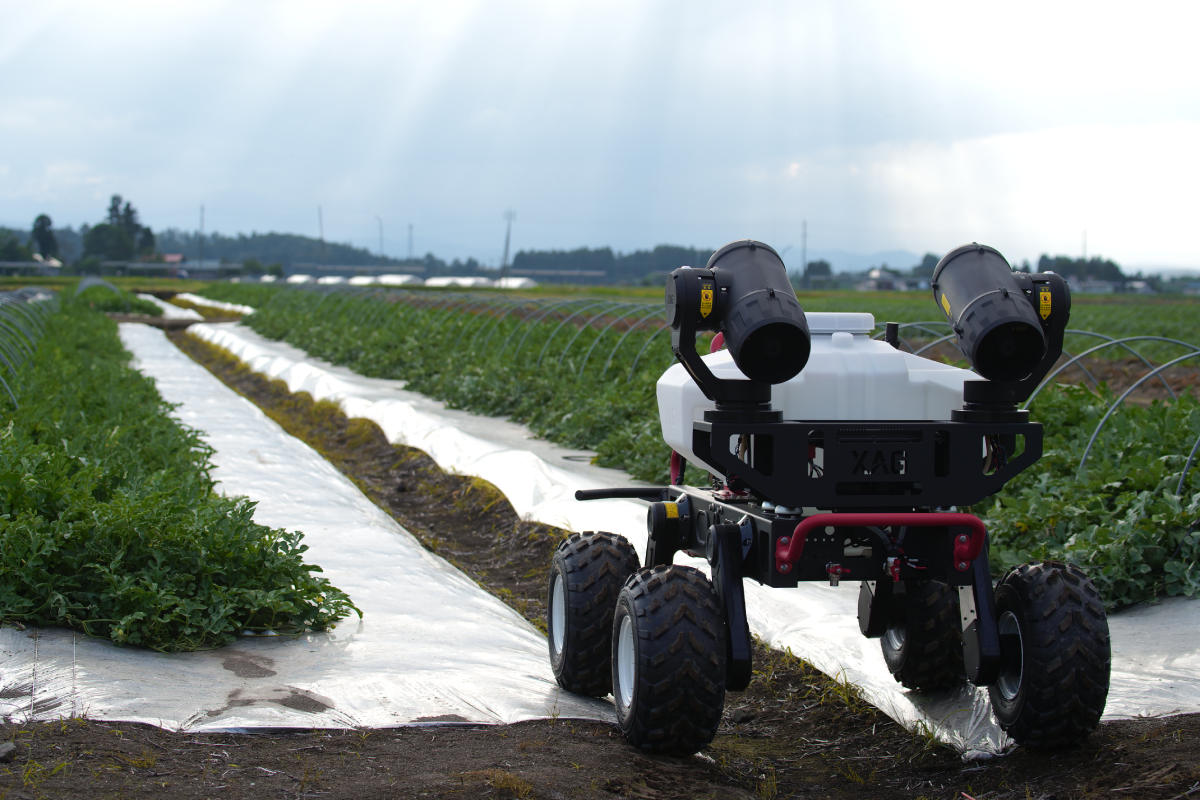- Home
-
Products
- News
- About
- Become a Distributor
Global - English

In hot summer days, what else can be better than a slice of iced watermelon to make you feel cool? In Japan, people are so obsessive about watermelon that this popular fruit has already been a part of their "melody of summer".
However, in recent years, what lays behind this most favourable melon are triple threats that came from domestic farmland decrease, rural aging, and labour shortage. As Japanese farmers struggle to maintain high quality melon production under the pandemic, XAG autonomous farm robots are now pitching in to help manage the watermelon fields with high precision.

R150 on terrain and ready for spraying (source: 企業組合ジパング)
The sweetest watermelon
Japan has a mountainous topography with 60 percent of forest coverage. The insufficiency of arable farmland make Japanese agricultural industry adopt the quality-based production model, rather than quantity-based model, to grow better with less.

watermelon field (source: 企業組合ジパング)
Among all origins, Obanazawa City, Yamagata Prefecture in northeast Japan is renowned for its suitable latitude and temperature of watermelon cultivation. The significant temperature difference between day and night has endowed Obanazawa watermelon with the highest sweetness and richest nutrition among all other competitors.
For farmers, sophisticated care from seeding, spraying, and fertilising are taken to cultivate a perfect fruit in Obanazawa, which makes watermelon growing an incredibly labour-intensive process with lack of intelligent tools. Nowadays, it is getting harder to hire sufficient workers to manage the melon fields year by year, with labour shortage being a long-term trouble to Japanese farming.
Besides, watermelons need precision irrigation during their life cycle, and growers need to deploy drip tapes in the field to secure water supply. Since most melon fields have bumpy terrains and long ridges, it becomes difficult and time-consuming for farmers to apply and retrieve those tapes regularly.

R150 carried to the watermelon field (source: 企業組合ジパング)
Robot as a perfect match
The burden of manual crop spraying as well as the imperfection of using drip tapes for irrigation have urged Japanese farmers to seek a new approach. Earlier this July, XAG R150 Unmanned Ground Vehicle has been carried to a field demonstration by a local drone company Zipangu in Obanazawa City, Yamagata Prefecture of Japan. The farm robot was used for watering the watermelon crops to test its function in a Japanese-first.
With strong trafficability on tough terrain, the R150 could easily traverse between ridges of watermelon field. As this self-driving robot slowly moving forward, water was spread precisely through high-speed airflow from the embarked JetSprayer system, attached on every leaf surface that needs to be cared for.
The demo was watched by prefectural government officers of Yamagata and representatives from local technology company. Audience showed great interest in further exploring the application scenarios of this autonomous robot in more fruit varieties.

Prefectural government officers and others watching the demo (source: 企業組合ジパング)
"This robot could be perfectly adapted to watermelon fields, especially as a great helper to smooth labour pressure in Obanazawa. Because we need to avoid gathering under the COVID crisis, the robot would be a good alternative to manual labour in busy season," said Tadao Homma, president of Op-tecs Industry.
According to the prefectural government, the number of autonomous ground robots is gradually increasing in the Yamagata Prefecture. Since the Japanese government is actively supporting smart farming technologies through new laws and regulations, watermelon growers in Japan can now expect a scale-up of lightweight farm robots to truly help them grow better fruits with less input.